Seal is an ocean mammal with a sleek, torpedo-shaped body and flippers in place of legs. Seals have adapted to living both on land and in the sea. They are excellent swimmers and are especially graceful in the water. On land, some seals walk on all four flippers, but others move by hunching their bodies with their powerful stomach muscles, somewhat like a caterpillar.
Loading the player...Seal
Seals generally live along the edges of continents and islands. Most species (kinds) of seals live in the earth’s polar and temperate zones, where the fish populations are largest. Seals live mostly in the oceans or inland seas, but a few species live in fresh water. For example, the Baikal seal lives in Lake Baikal in Russia.
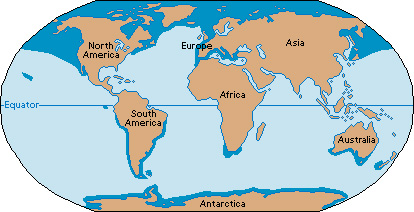
People may use the name seal for any of a group of animals that scientists call pinnipeds. The term pinniped comes from a Latin word meaning fin-footed. A pinniped’s flippers look somewhat like fins. There are more than 30 different species of pinnipeds. They are divided into three main groups: (1) eared seals, which include fur seals and sea lions; (2) earless seals, including harbor seals and elephant seals; and (3) the walrus.
Kinds of seals
Eared seals
include fur seals and sea lions. They are called eared seals because they have ear flaps that cover their ear openings. Other pinnipeds have uncovered ear openings. Another characteristic of these seals is that their hind flippers can be rotated forward and down, so that they can use all four flippers to walk on land. Fur seals and sea lions swim by using only their front flippers. 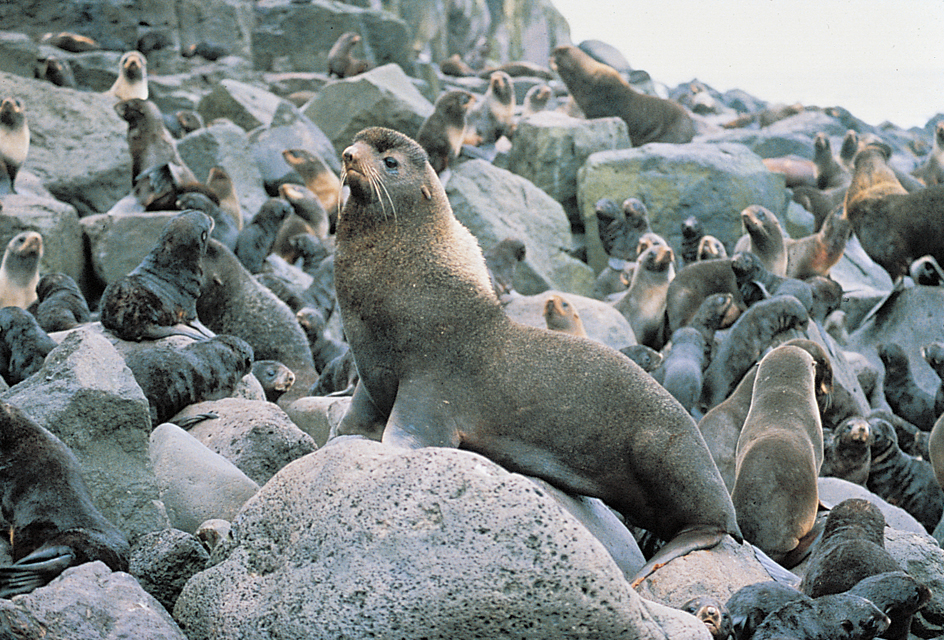
Eared seals live mainly in the northern Pacific Ocean and in coastal areas of the Southern Hemisphere. Fur seals have fur to insulate them from cold water, while sea lions rely on thick layers of blubber. Sea lions are larger than fur seals and have a broader, less pointy nose. Both groups move well on land and often travel relatively far from shore.
Earless seals
make up another group of pinnipeds. These seals do not have ear flaps, but they do have ears. In fact, they have excellent hearing both above and below the water. Another important difference is that earless seals cannot use their rear flippers to walk on land. They pull themselves forward on their bellies, using their front flippers and powerful stomach muscles. On land, they do not move as fast as eared seals and cannot travel as far from shore. Earless seals use their hind flippers to swim using a side-to-side motion, like most fish. They can dive better than eared seals can.
Loading the player...Elephant seal
Walruses
are physically much different from other pinnipeds. For example, the walrus is the only seal with tusks. But walruses have features in common with both eared and earless seals. Like eared seals, walruses use their hind flippers to walk on land. Like earless seals, walruses have small ear openings but no outside ears.
The body of a seal
The largest pinniped is the southern elephant seal, which lives in the waters surrounding Antarctica. The male may grow 16 feet (5 meters) long and weigh up to 8,800 pounds (4,000 kilograms). This seal ranks second in size only to whales among all sea mammals. One of the smallest pinnipeds is the ringed seal. It usually grows about 31/2 feet (1.1 meters) long and weighs 110 to 200 pounds (50 to 90 kilograms).
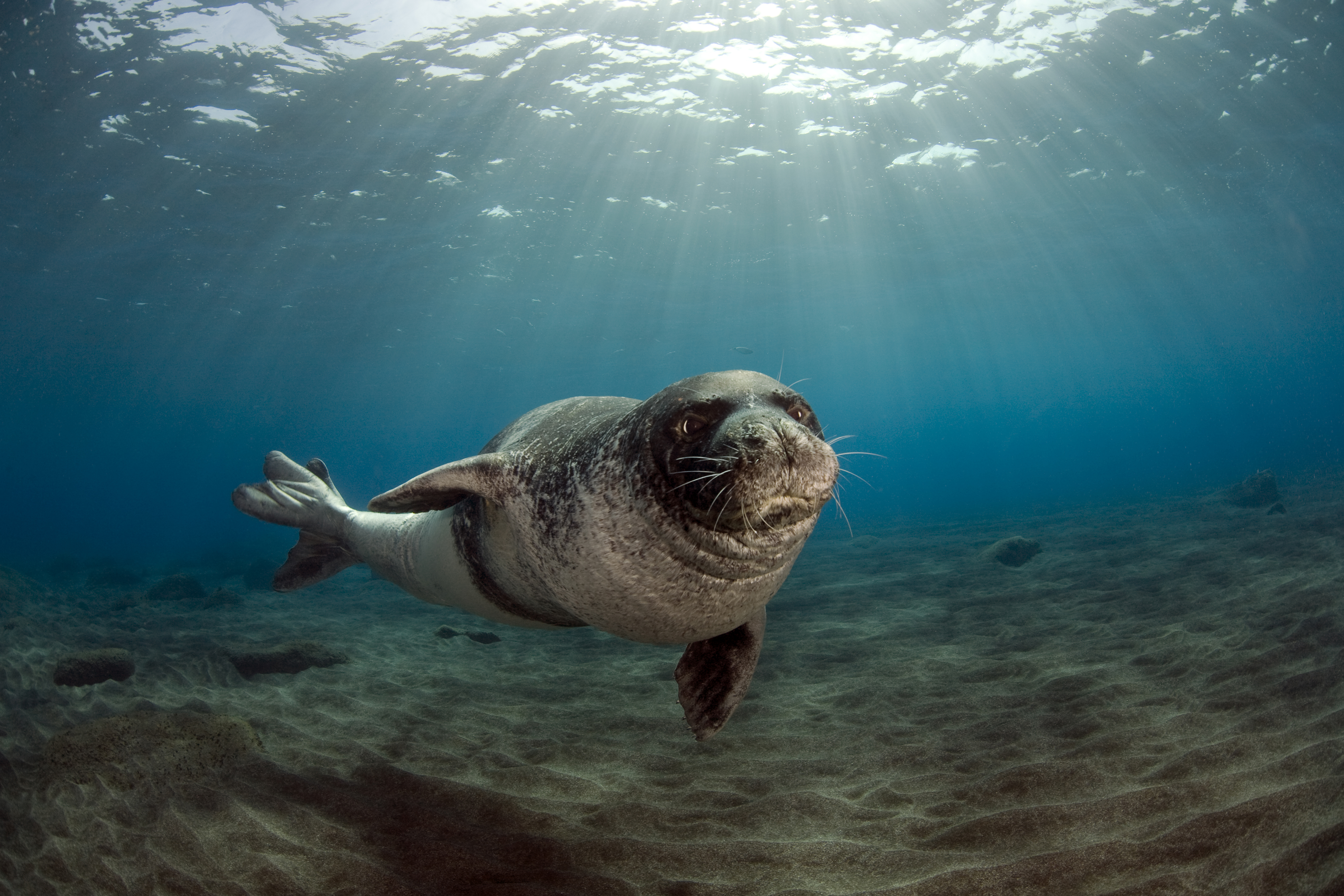
Fur seals rely almost entirely on their thick coats of fine fur for insulation against the cold. Other seals rely on a layer of blubber that is often 1 to 6 inches (2.5 to 15 centimeters) thick.
Head.
All seals have slitlike nostrils, which they can close when they swim underwater. Some kinds of seals have small heads with short noses. Adult male elephant seals have a long, curved nose that helps them attract mates.
The nose of a male hooded seal has a pouch that extends to the top of his head. When a competing male approaches, the seal inflates this pouch as a threat, making his head appear larger. An additional pouch inside the nostril also inflates, forming a bright red “balloon” that adds to the display. 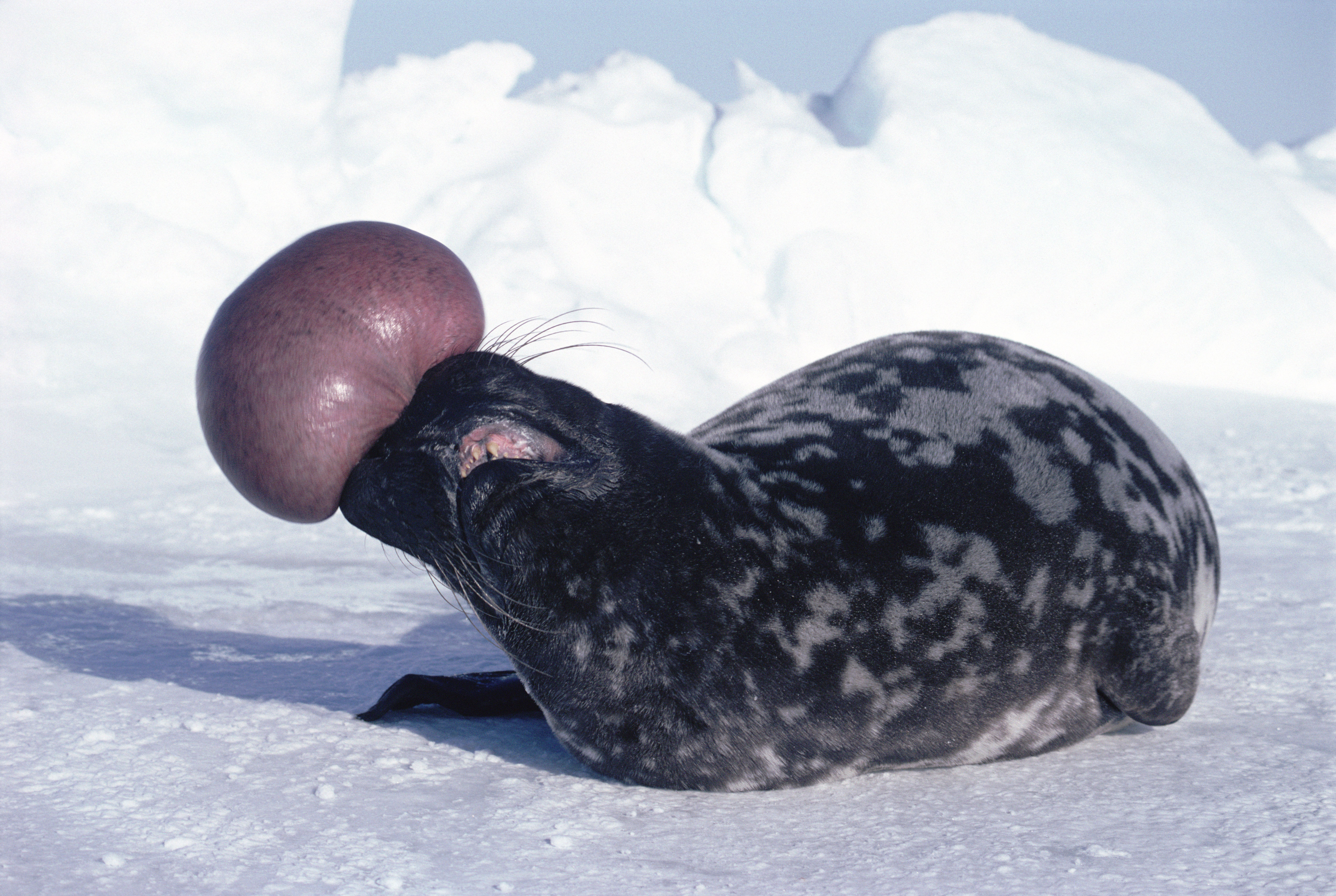
Seals have large eyes and can see well in the dark. This enables them to feed at night or in deep water where there is little light. All seals have whiskers on their upper lip. The whiskers are sensitive to touch and probably help the animal find food.
Flippers.
Seals have four legs, but the leg bones above the ankles do not extend outside the body. The ankles and feet form large, paddlelike flippers. The front flippers of fur seals and sea lions are longer and flatter than those of earless seals. A fur seal’s front flippers may be more than 18 inches (45 centimeters) long and 6 inches (15 centimeters) wide.
The life of a seal
Seal rookeries.
Seals go to their breeding grounds, called rookeries, to mate and to bear their young. More than 150,000 seals may gather at one rookery. The rookeries of earless seals can be on the shores of islands or continents. But all fur seal and most sea lion rookeries are on islands. Rookeries may occur on large sandy or rocky beaches. 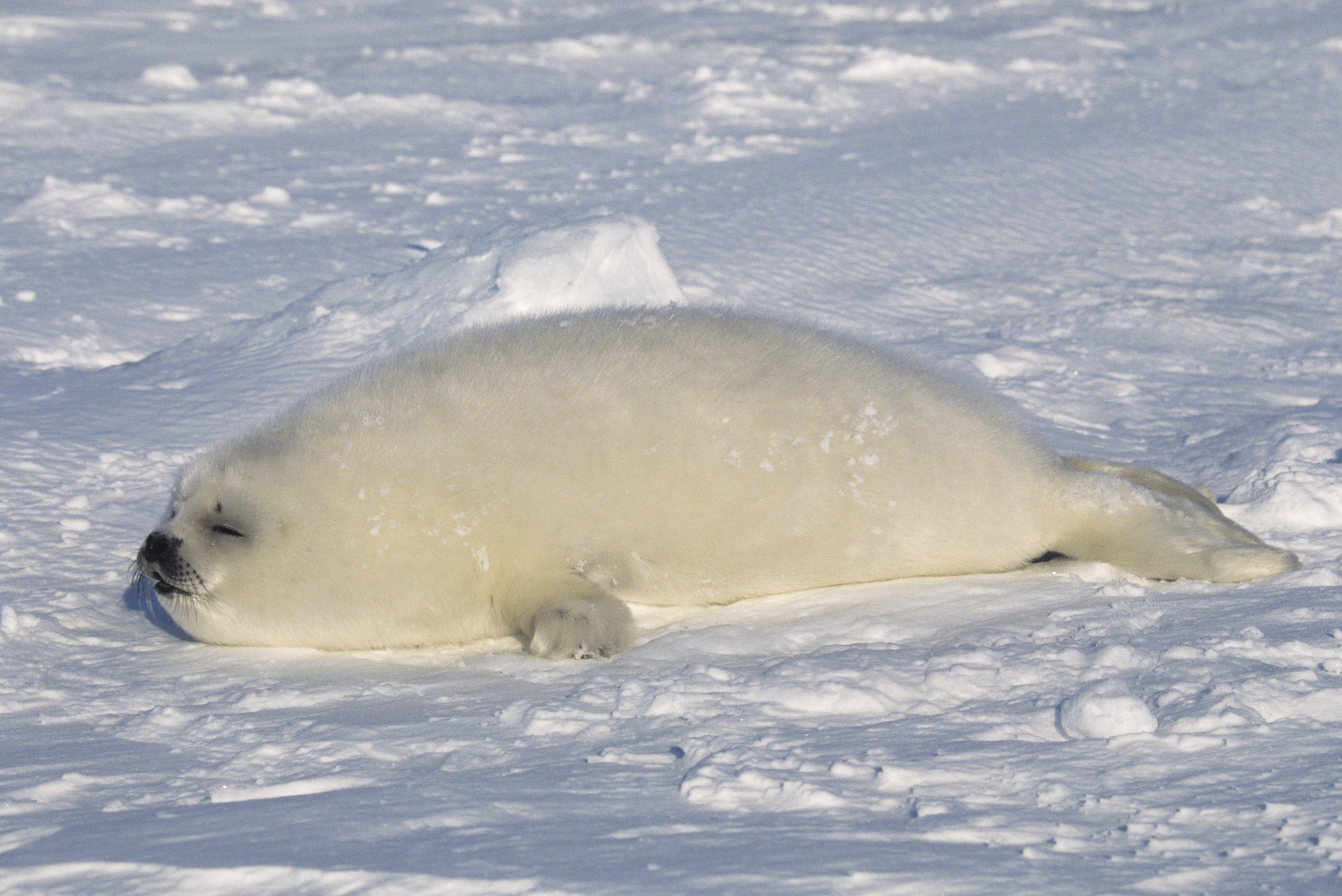
Bull seals fight to establish territories within a rookery. They defend these territories and the cows within them. Young bachelors and older bulls without a harem (group of females) live apart from the others. Cow seals prefer to mate with the largest, most experienced males. Most cow seals bear their first young when they are 5 to 6 years old. They usually give birth every year after that. Some cow seals can give birth at 2 or 3 years of age. Some continue to bear young until they are about 25 years old.
Birth.
In all seal species, the young are conceived during one mating season and are born during the next. In most species, the embryo undergoes a period of delayed implantation—that is, it does not begin to grow in the mother’s body until six weeks to five months after conception. Actual development of the young occurs over a nine-month period. A seal almost always has one pup (baby seal) at a time. Twins are rare. 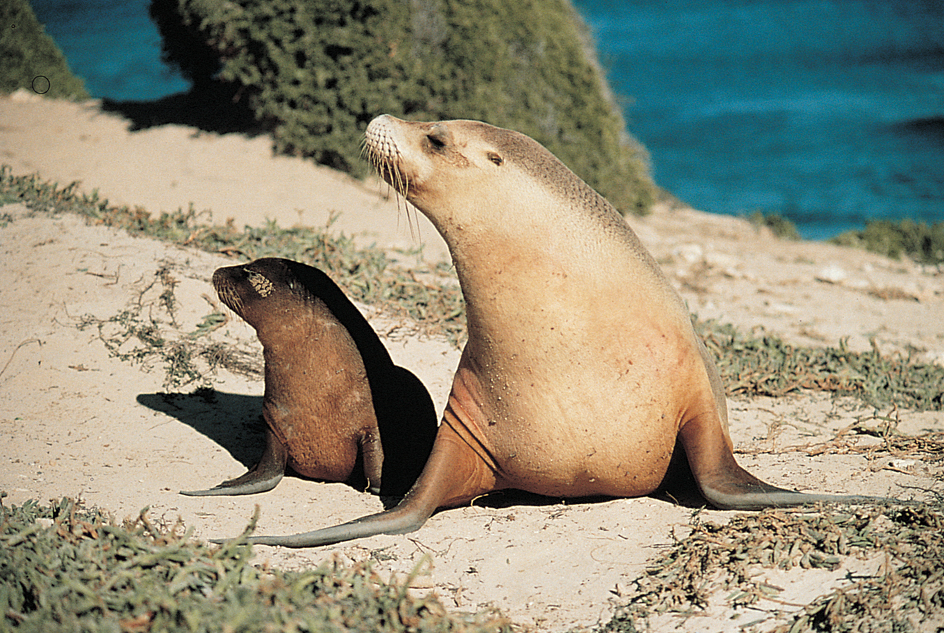
A newborn pup is covered by a fine soft fur. Sea lion pups have brown fur, and newborn fur seals, elephant seals, and monk seals have black coats. The fur of baby harp seals, leopard seals, walruses, and other seals that live on floating islands of ice is usually white or grayish in color. 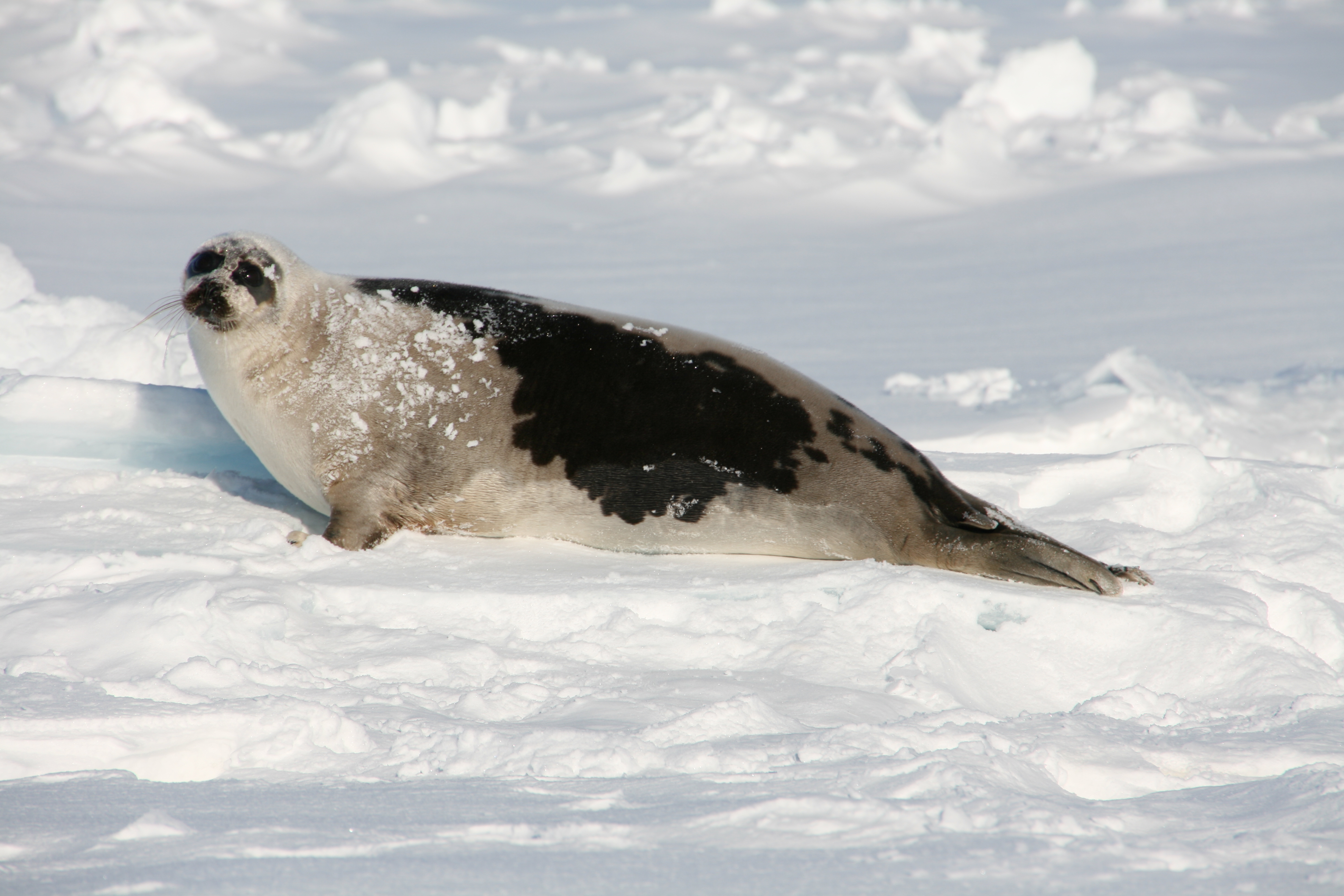
All seal pups are born in an advanced stage of development. Their eyes are open and they can walk and vocalize within minutes of birth. Harbor seal pups can even swim within minutes of being born.
Raising young.
Each seal species rears its pups differently. Most earless seal mothers remain at the rookery continuously from the birth of their pup until it is weaned (able to eat regular food). During this time the seal cows do not feed. Some other seals, including harbor, ringed, and Weddell seals, do eat while rearing their young. For these species, weaning occurs abruptly when the mother leaves the rookery, leaving the pup behind. In some species, such as northern elephant seals, the pup remains at or near the rookery, not eating or drinking, for months after weaning.

Eared seal mothers divide their time between feeding at sea and nursing their pups on land. A mother may stay at sea for several days and then return to nurse her pup for 1 to 3 days. This cycle lasts from at least four months up to three years. But in most species, pups are weaned within a year of their birth.
Mother seals find their pups out of the hundreds of others at the rookery by calling out to them. When a pup hears its mother, it begins to call back. Each mother and pup have a unique call, and the mother responds only to her own offspring. Once together, the mother recognizes her baby by its smell.

Food.
Seals feed on various marine animals. They have sharp, pointed teeth. They cannot chew food because their teeth have no flat surfaces. They swallow small fish whole or grasp and tear off pieces of larger prey.
Fur seals and sea lions eat primarily fish and squid. Harbor seals eat mostly fish and octopuses. Crabeater seals feed mainly on small, shrimplike creatures called krill. Elephant seals prefer fish and squid. Leopard seals feed on fish, krill, penguins, and sometimes other seals.
Diving.
Seals are excellent divers. They can dive deeper and longer than most other mammals because their bodies store more oxygen. Fur seals and sea lions, for example, can store twice as much oxygen as human beings can. Earless seals can store three times as much oxygen as human beings can. Fur seals and sea lions feed on prey near the surface, while earless seals feed on prey in deeper water and on the bottom.
Elephant seals exceed all other seals and even most whales in diving ability. They can dive about as well as the sperm whale, which is the deepest diving whale. Northern elephant seals dive continuously, day and night, for two to eight months. They spend an average of 20 minutes underwater per dive.
Predators.
Few predators (hunting animals) attack seals besides human beings. Large sharks and killer whales attack them in the water, and polar bears hunt seals on ice. A seal has few defenses against its predators. In the water, it usually tries to escape an attacker. A frightened fur seal can swim as fast as 10 miles (16 kilometers) per hour for about five minutes. Some species swim among the strong waves and between the large rocks close to shore, where most of their predators cannot go. Other species dive deep when a predator approaches.
Many kinds of seals are so slow and clumsy out of the water that they have little chance of escaping a predator. Crabeater seals are one of the fastest seals on land or ice. They can move about 15 miles (24 kilometers) per hour—almost as fast as a person can run.
People and seals
Seals in captivity.
Fur seals and sea lions are the kinds of seals that most often perform in shows at circuses, zoos, and marine parks. These seals are more acrobatic and easier to train than other types of seals. Trained sea lions crave attention and enjoy performing. A strong bond often develops between sea lions and their trainers. Sea lions breed so well in captivity that many zoos and marine parks have had to control breeding to prevent overpopulation.
Hunting of seals.
People have hunted seals for thousands of years. To the Inuit people of the Arctic, seals are an important source of food. Many peoples hunt seals for their fur, skin, and oil.
In many places, fur seals were hunted almost to the point of extinction. In 1911, Canada, Japan, Russia, and the United States signed an agreement to protect northern fur seals. Under the agreement, seals could be hunted commercially only on land.
Since the 1970’s, the demand for seal fur has declined as people became more concerned about the welfare of the animals. A combination of the declining market for furs and pressure from environmental groups helped to end the commercial harvest of fur seals on the Pribilof Islands in 1986. However, thousands of young male fur seals are still harvested each year for food by residents of the Pribilofs.
Seals and fishing crews.
In some cases, seals and fishing crews compete for the same fish. In the Ballard Locks near Seattle, for example, California sea lions have learned that salmon are easy to catch when the fish approach the artificial waterways called fish ladders. Salmon use these fish ladders when swimming around the locks. The sea lions eat so many of the salmon that the local salmon population has seriously declined. This decline has reduced the local salmon harvest.
However, seals are often blamed for reductions in fish harvests that may actually be due to overfishing. It is also possible that seal populations are shrinking because fishing by human beings is reducing the animals’ food supply.
Threats to seal populations
include the destruction of their habitats due to increased use of coastal resources and the expanded use of the ocean for recreation. Seals are often accidentally caught in fishing nets. Many seals also get entangled in discarded plastic packing straps and discarded or lost fishing gear. This problem grows worse over time, as many of these discarded products do not break down from the action of microbes in the water and so last for years. As human populations increase, people will likely disturb more seal rookeries.
